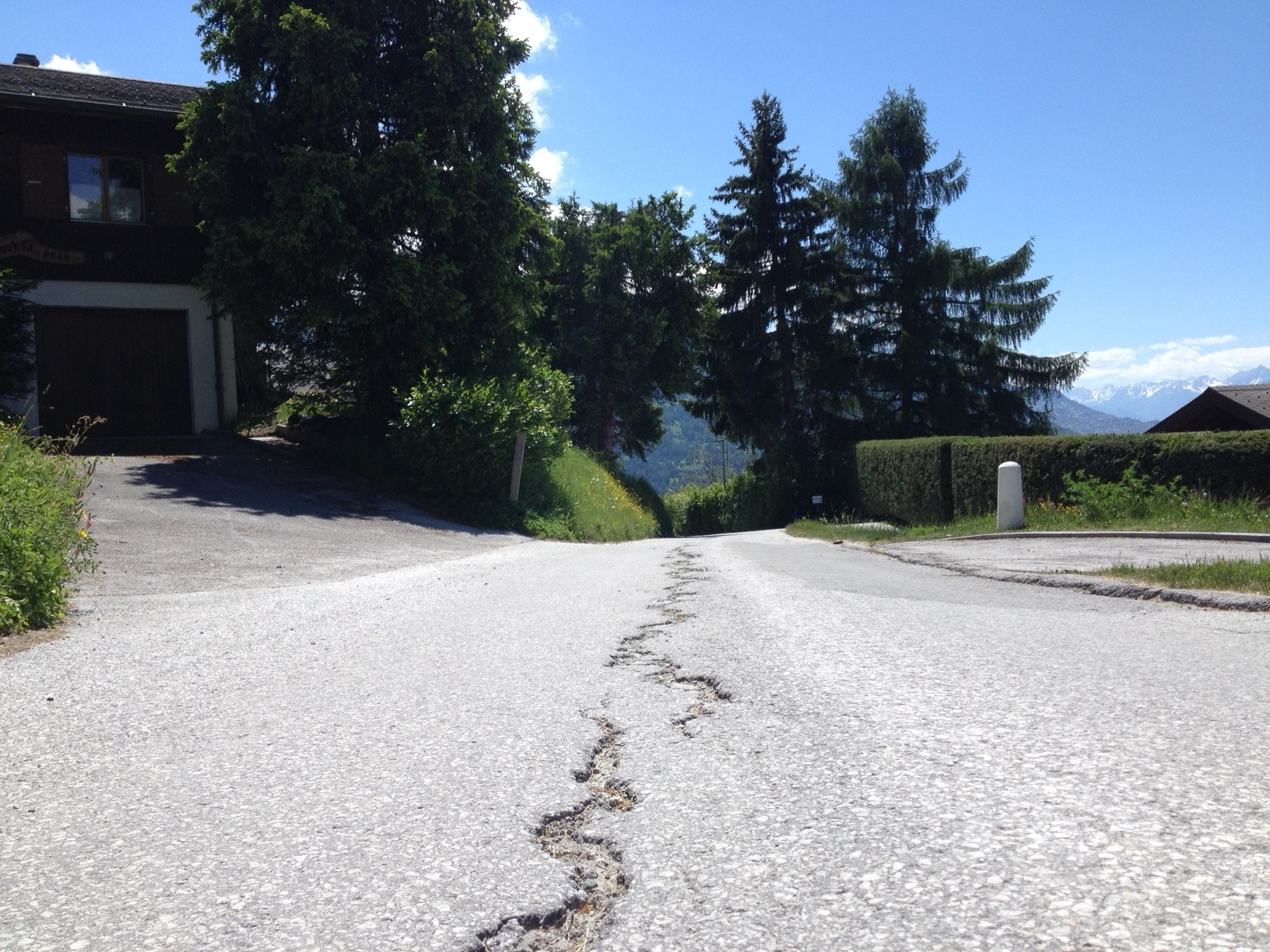Transportation from hinterland to city (Switzerland perspective)
FC-01x Future Cities (1st Run) - Task 2

Uploaded on 2015-06-02 by eribar
Today this infrastructure network is crucial sustaining the socio-economic life of the area. Furthermore, roads are used as a convenient way for other infrastructures (sewage water, optic fiber, etc.). However, the road network has a life cycle of ~30 years in the context of the alpine settlement (stability of the infrastructures of the road, I mean the stable bed below macadam). Now, most of the roads network is 50 years old without major maintainance. As you could see from the picture, the transportation network is in bad shape (cracks in the middle of the roads, and what difficult to see on the picture, is the difference of 10cm of level between the middle of the road and the 2 treads). In turn, these deformations may cause damages to the sewage system, with unknown water infiltration in the terrain and possible pollution). The other infratstructure such as information network is more recent and built with more flexible tubes and should adapt to the deformations. This example allows me linking 2 others weeks of the course. The information architecture and the stocks and flows. This ageing road network should be linked to information architecture by the knowledge (and the record) of an element of the network which has an age, a duration, a certain level of usabilty. The maintanance of such roads is in turn linked to the flows of cars (thus the work forces of the city). ![saisir une description de l’image ici][1] [1]: https://edxuploads.s3.amazonaws.com/14332496459033852.jpg